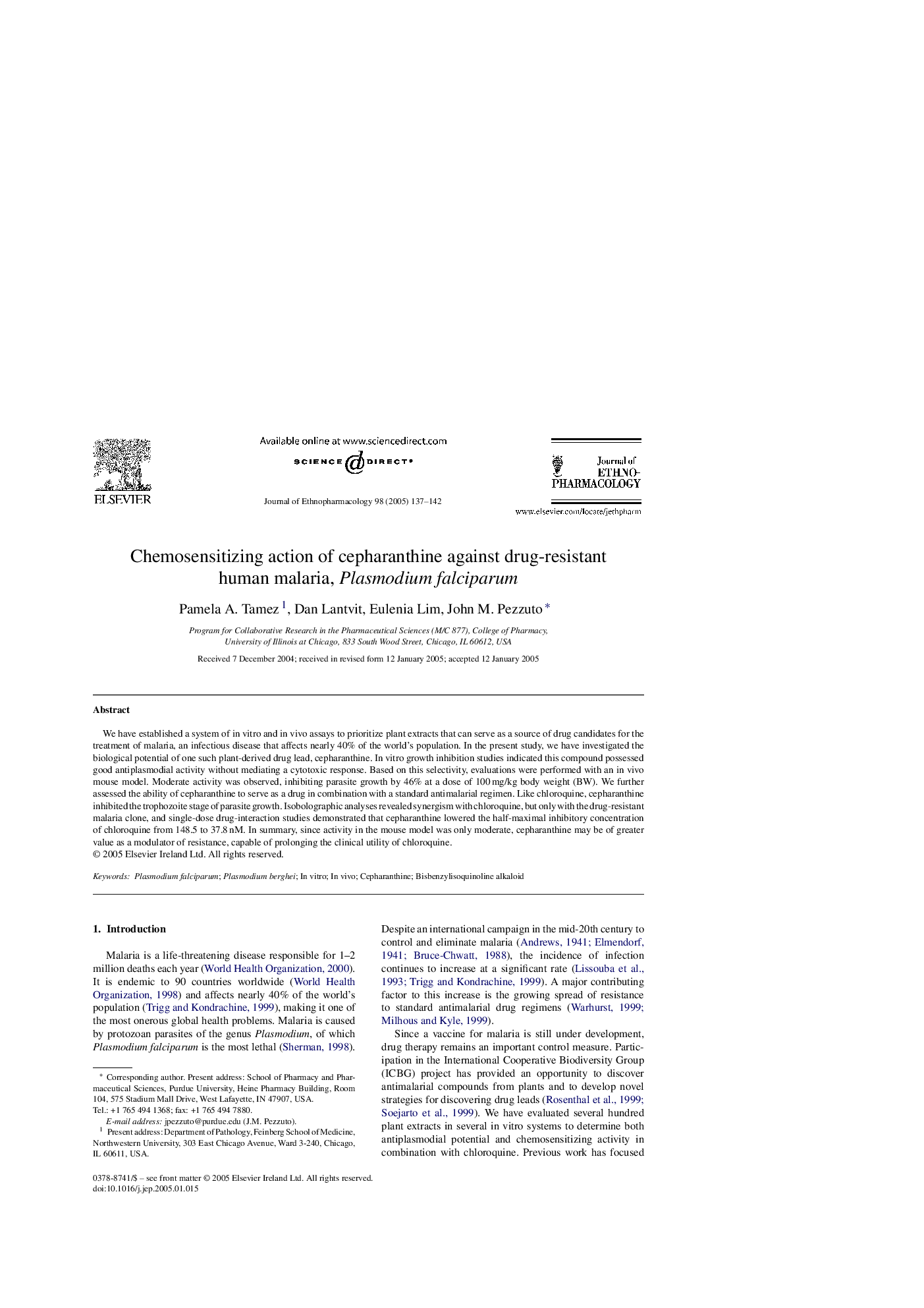| Article ID | Journal | Published Year | Pages | File Type |
|---|---|---|---|---|
| 9011383 | Journal of Ethnopharmacology | 2005 | 6 Pages |
Abstract
We have established a system of in vitro and in vivo assays to prioritize plant extracts that can serve as a source of drug candidates for the treatment of malaria, an infectious disease that affects nearly 40% of the world's population. In the present study, we have investigated the biological potential of one such plant-derived drug lead, cepharanthine. In vitro growth inhibition studies indicated this compound possessed good antiplasmodial activity without mediating a cytotoxic response. Based on this selectivity, evaluations were performed with an in vivo mouse model. Moderate activity was observed, inhibiting parasite growth by 46% at a dose of 100Â mg/kg body weight (BW). We further assessed the ability of cepharanthine to serve as a drug in combination with a standard antimalarial regimen. Like chloroquine, cepharanthine inhibited the trophozoite stage of parasite growth. Isobolographic analyses revealed synergism with chloroquine, but only with the drug-resistant malaria clone, and single-dose drug-interaction studies demonstrated that cepharanthine lowered the half-maximal inhibitory concentration of chloroquine from 148.5 to 37.8Â nM. In summary, since activity in the mouse model was only moderate, cepharanthine may be of greater value as a modulator of resistance, capable of prolonging the clinical utility of chloroquine.
Keywords
Related Topics
Health Sciences
Pharmacology, Toxicology and Pharmaceutical Science
Pharmacology
Authors
Pamela A. Tamez, Dan Lantvit, Eulenia Lim, John M. Pezzuto,
